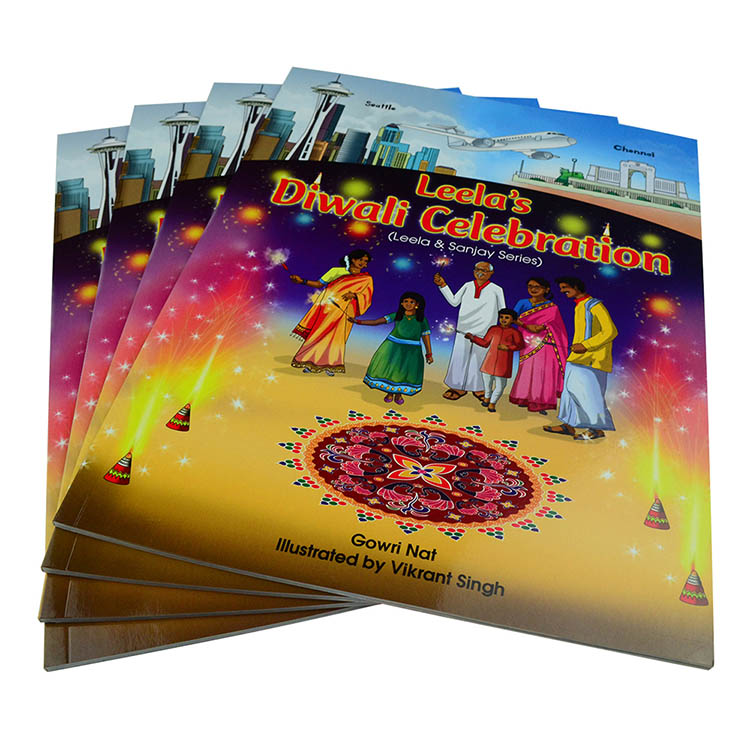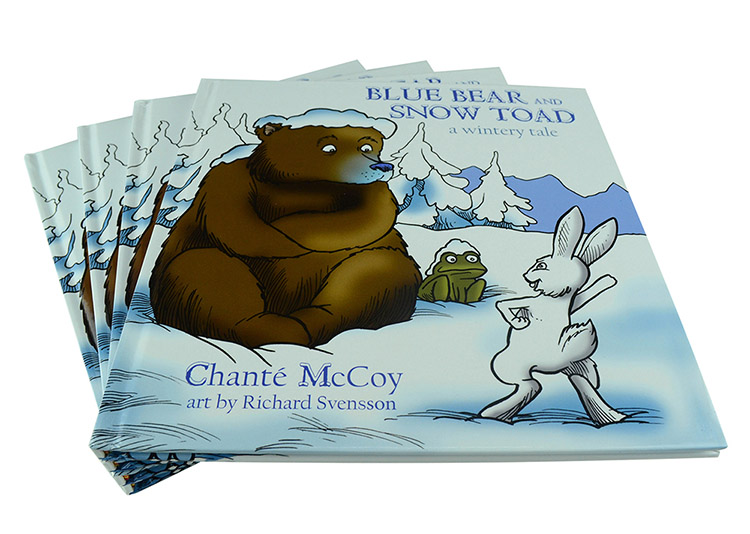
Selecting the right paper is necessary when custom book printing and binding. Because the paper not only affect the entirely look, reading experience and durability, also affect your budget. In this article, we discuss three common paper types, factors to consider when choosing paper and guide you on how to choose the best paper for your book printing and binding project.
Common Paper Types for Book Printing
When comes to custom book printing and binding, Chinaprinting4u provides a variety of paper types for you to choose from. Here, we introduce 3 common paper types are used most in book printing, includes:
1. Glossy art paper: Known for its shiny finish, this paper type enhances the vibrancy of colors, making it ideal for books with high-quality images.
2. Matte art paper: This paper has a smooth, non-reflective surface, providing a elegant look while still delivering excellent color effect.
3. Uncoated paper: Without any coating, this paper offers a natural feel and is often used for books that is black and white or for writing, such as novels and notebooks.
Factors to Consider When Choosing Interior Paper
When selecting the paper for your book printing and binding project, here are some key factors we need to consider, includes:
1. Size
Size is an important factor when selecting the book printing paper. As different book size, the requirement for paper weight is different.
Generally, for small-sized books, thinner paper is often the best choice, but that will depend on your page counts and binding. This is because smaller books are typically intended to be lightweight and easy to handle. Using thinner paper makes the book more comfortable to hold and read. It is particularly suitable for novels, pocket guides and handbooks.
On the other hand, larger books often require thicker paper to achieve durability. It provides a more substantial feel and enhances the book's overall quality. Thicker paper is ideal for coffee table books, art and photography books, etc large size book.
2. Page Count
Page count is also a key factor to affect the paper choice when custom book printing and binding. Usually, less pages are recommended thicker paper, while higher pages are recommended thinner paper, to balance the budget and quality.
Fewer pages generally use thicker paper to add substance and weight, providing a sense of quality and durability. For example, children's books often have fewer pages, using thicker paper can make the pages more durable and easier for small hands to turn.
For books with more pages, thinner paper is usually the best choice. It helps to keep the overall thickness and weight of the book manageable, ensuring that it is comfortable to hold and use. For example, novel books often have hundreds of pages, using thinner paper prevents them from becoming too bulky and heavy.
3. Book Type:
The type of book significantly influences the choice of paper. Here's a guide on choosing the best paper type based on the book type.
Black and white books printing: For books primarily featuring black and white content, such as novel, workbook and coloring book, offset paper is the ideal choice. As the offset paper is uncoated, with good ink absorption and textured surface, making it easier to write and draw on it. Besides, offset paper is economical and offers a good balance between quality and cost.
Color books printing: Books that rely heavily on images require paper that enhances the visual appeal. Glossy and matte art paper are excellent choices, such as cookbooks, photo books, and children's picture books, ensuring sharp and vivid image reproduction.
Board books printing: Board books, typically for young children often use coated one side paper. It offers the durability and provides a smooth, glossy surface that can be wiped clean.
4. Budget:
Your budget is also play a crucial role in selecting the appropriate paper type. Higher quality and special papers will generally cost more, so it's important to balance quality with cost.
What's the Best Paper for Your Book's Cover
The cover of your book is the first thing that readers see, and it plays a crucial role in making a lasting impression. Thus, selecting the right paper for your book's cover is very essential. Here's a guide to help you choosing the best cover paper for different types of book printing and binding.
Softcover books cover
For the cover of softcover books, opt for heavier coated paper to accurate reproduce your artwork, while still provide enough durability to withstand wear and tear .
The popular paper weight to print the softcover book cover includes 200gsm, 250gsm, 300gsm and 350gsm glossy or matte art paper. For someone seeking for economical, 200gsm or 250gsm is the great option, while someone want more durability and good touch feel, 300gsm or 350gsm is the ideal choice.

Hardcover books cover
For the cover of hardcover books, opt for thicker paperboard or cardstock. To ensure the durability and enhance the collection value of the book.
Typically, the most common option is 157gsm glossy or matte cover paper wrapped a 2-3mm gray board, providing durability and a high-quality appearance. If someone looking for more luxury, and special look, other popular options like cloth, leather, or other special paper, wrapped a 2-3mm gray board. These materials can add sturdiness and an upscale appearance.

Board books cover
Board books, often intended for young children, require durable covers to endure rough handling. There are two primary approaches for board book covers. Self-cover board books which covers often use two sheets of 250gsm-350gsm coated one-sided paper mounting together. Hardcover board books which covers often use 157gsm glossy or matte cover paper wrapped a 2-3mm gray board.

How to Choose the Best Paper to Print the Book Interior
The interior paper choice is also important when comes to custom book printing and binding. As it will take a big influence on overall look, durability and reading experience. Thinner paper is lightweight and easy to hold on hand. Heavier paper is enhance the printing quality and durability, and providing better reading experience.
30-50gsm lightweight text paper: Ideal for bible book, dictionary, etc types of book printing.
80-110gsm thinner text paper: Suitable for thicker book printing, such as novels, thick catalogues, notebooks, etc. These paper weights are also a cost-effective choice for commercial printing, providing a balance between quality and budget.
120-140gsm medium thickness text paper: Ideal for standard page count of book printing, range from dozens to hundreds of pages, such as children's book, photo book, journal, comic book, and so on. These paper weights are a relatively economical option for most book printing and binding, providing high quality printing result still meet most budget requirement.
157gsm-160gsm thicker text paper: Ideal for thick book, high-end book or large format book printing, such as high-end photo book, coffee table book, children's picture book, luxury journal & planner, endpaper, etc. These paper weights provide best printing result, also enhance the books overall durability and appearance.
If someone looking for more higher quality and heavier paper, we provide other options, such as 180gsm, 200gsm, etc.
The interior paper choice will depend on your page counts, book types, size, binding and budget. For example, if your children's picture book is 8.5" x 11", 28 pages with case bound. We often recommend 157gsm glossy or matte art paper to achieve best printing result, also make sure your book enough strong to withstand wear and tear.
Conclusion
Choosing the right paper for your book involves considering several factors. It includes the book's size, page count, type, and your budget, each decision will affect the look, feel, and overall quality of the final product.
If you have any question or need guide to choosing your book printing and binding paper, feel free to contact us. Our team of experts is ready to help you select the perfect paper for your project.

